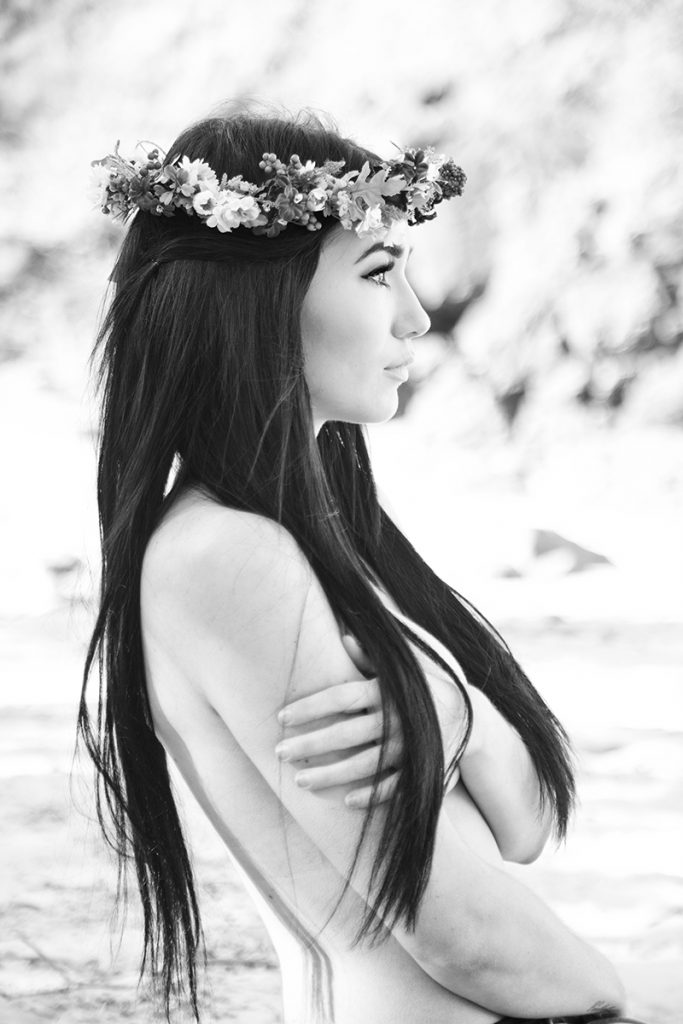The Newbie's Guide to Product Photography
If a image is worth a thousand words, a magnificent product image is worth a thousand site brows through. Although I do not have information to back up that statement (yet), product photography can be extremely important to your ecommerce internet site approach.
To reach your target audience participants who choose purchasing online, you additionally need to provide your audience clear, eye-catching images of your products.
But product photography isn't as basic as pointing and also firing. Also the most standard items require the appropriate tools, illumination, as well as room to produce attractive images that sell customers right from the acquisition web page.
6 Product Photography Tips ( and also Instances) for Taking Photo That Market
Right here are the suggestions, examples, as well as materials you'll need to efficiently picture and market your items in such a way that makes your visitors and leads want to convert.
1. Don't be afraid to use your smartphone's video camera.
This is the part where I'm supposed to encourage you to invest in a high-end, 50-megapixel (MP) camera with a 100-millimeter screw-on lens. However I'm not mosting likely to do that.
If you already possess a camera that fits this summary, take advantage of it. But also for lots of sorts of products, it's entirely acceptable to shoot product photos on a smart device.
More recent mobile phones boast powerful video camera lenses and also settings that allow you to optimize your shots for the various types of light as well as atmospheres you could fire in.

If you require much more persuading, simply check out Apple's Shot On An apple iphone campaign and the photos that have arised from it for many years such as this one:
2. Shoot from a tripod for photo uniformity.
Before clarifying tripods, I'm bound to start with a cardinal guideline: Don't prop your phone versus something tough to aim your lens towards the subject.
It's just as well very easy for this makeshift arrangement to glide about throughout the shoot and also create variances in your photos' appearance. If you relax your video camera on, state, a pile of books, simply be sure this setup doesn't transform over the course of the shoot.
There's no harm in holding your camera yourself when shooting simply a couple of product images for your ecommerce internet site. But as your organization grows, and you take much more images of more products, it can be challenging to standardize the product's orientation in each photo when firing portable.
To guarantee consistency across your items, you'll need a tripod. And also the good news is, getting one isn't constantly the large, industrial-sized investment it utilized to be.
Right here are two types of tripods to consider.
Traditional vs. Adaptable
This is a tradition tripod-- there are conventional tripods available for both cams and also mobile phones.
A adaptable tripod can be adjusted in a number of means. You can flex its legs and place it on various surface areas to get the angle you require.
Mobile Hold
There's often a screw on the top of your tripod which attaches to your electronic camera to hold it in position. The bottom of the majority of professional-grade video cameras has a screw hole just for this function, but smartphones can use the adhering to adapter:
The adapter holds the sides of your smart device and can screw into either type of tripod, permitting you to run the camera controls with the phone screen dealing with external as well as toward you.
As soon as you figure out which install you'll need, set it up in front of your product, and also consider placing 3 pieces of tape on the ground to mark where you 'd like to maintain each leg of your tripod throughout the shoot.
3. Pick all-natural light or fabricated light.
Never ever take too lightly just how certain kinds of light can boost (or hinder) your product photography. Bear in mind, purchasers get the very best take a look at an thing in person, where they can see every little thing they require to prior to acquiring. The right illumination arrangement helps you disclose those critical decision-making product attributes when all website visitors have to go on is a photo.
A solitary lights setup may not benefit every product-- a illumination setup that benefits some products could weaken the appearance of others.
There are two kinds of light you can choose as your primary light: natural and also man-made light.
All-natural Light
All-natural light describes sunshine-- basic as that. It's additionally known as "soft light" since the sun casts Look at this website a larger, softer variety of light than, claim, a light shining directly on the product. Ecommerce product shots thrive in natural light if:
The product is shot outside or suggested to be used outside.
The product is made use of by, worn on, or shot with a person ( individuals have a tendency to look better in natural light).You're trying to emphasize the product's surroundings, rather than details characteristics of the product.

Synthetic Light
Fabricated light includes candle lights, fire, and also more generally, light bulbs. It's likewise described as " difficult light" due to the fact that it produces a smaller sized but extra focused light surface. This kind of light satisfies products with physical details that need to be highlighted to thrill an on-line buyer.
As a general rule, stay with simply one kind of light per photo-- natural or man-made. Adding natural light to an artificially lit photo can soften a product that's meant to festinate, and including artificial light to a normally lit photo can develop a product that's suggested to look soft. You do not want to enter your own means.
4. Load or jump your light to soften shadows.
Whether you utilize all-natural light or fabricated light, you'll need to minimize the darkness that any kind of prospective difficult light casts on the opposite end of a product.
There are 3 methods to do this:
Fill Light
Consist of one more, less-intense light source to supplement your major light. This extra light is called your fill light and is used as a counterbalance to soften the natural shadow your primary light creates behind an object.
To do this, put your fill light opposite your major light so your product rests between both lights.
Flashbulb Bounce Card
A bounce card, or reflector card, is a little card that "reflects" or " jumps" the primary light back onto the surface beneath your product to minimize shadows.

Standalone Bounce Card
If you're firing from a mobile phone, a flashbulb bounce card isn't an option, given that you do not have a physical flash you can connect it to. Rather, make your own standalone bounce card positioned contrary your major light source.
For beginners to product photography, this bounce card can efficiently change your fill light, which counters the tough light from the cam flash or light that's facing toward the front of your product.
5. Utilize a move or picture mode to highlight the product.
There isn't one best means to position your product, lights, and also jump cards-- they can transform considerably relying on your history. But do not choose a history based upon what's most convenient to develop. Histories must resemble just how you desire your buyers to regard your product when viewing it online.
Take into consideration initially whether you would certainly such as a white history or a more vibrant, real-world background. There's an simple way to achieve each one.
White Background: Move
For white histories, it's not as easy as establishing a table against white drywall. Even mobile phone video cameras can pick up little blemishes on a white wall surface that you would not notice with the nude eye. To catch a ideal white history without edges or blemishes, use a move.
A move is a huge flexible sheet of paper, whose lower work as Campaign Concept the surface below your product and afterwards contours up into a white wall behind the product.
On electronic camera, the move's curve is undetectable, stressing crucial product information as well as permitting the product to own all of a internet site site visitor's focus.
Real-World Background: Picture Setting
Dynamic, real-world backgrounds are really enticing when shooting items that have a certain use or are being designed by a person-- as you saw in the picture of the brief-case earlier in this guide.
However, it's easy for a real-world history to take the emphasis of the photo, making it vague which item in the photo you're in fact selling.
Provide your product depth and also emphasis with portrait mode, a picture setting on many specialist electronic cameras, and likewise available on several brand-new mobile phones. This setting obscures the history so the context of the product is clear however not competing against the product itself.
Below is a extremely awesome photo of a HubSpot pen absorbed portrait mode on a Google Pixel 2 (I took this image myself). You can tell the pen rests on a workdesk with a computer system behind it, but the pen is still the prime focus for audiences:
6. Fire a variety of photos.
My last ecommerce photography pointer to you is to not stop at one photo per product. Equally as your consumers look, hold, use, and also also try on merchandise in a shop, your website should fire a selection of photos to simulate this very experience.
If you're firing clothing, as an example, record the garment of garments alone-- that is, spread out on a white surface area-- as well as on a mannequin whose shade contrasts the color of the product.
After that, for extra images, have the apparel modeled on a individual, permitting you to take images of the product from the person's various poses and angles.
Product Photography Set Up
Next off, allow's summarize what we just got-- below's a list of fast product photography set-up suggestions that you can describe and share on your group:
• Select a electronic camera-- whether or not that means utilizing your smartphone.
• Obtain a tripod that benefits your video camera of selection.• Pick natural or fabricated lights-- think of which choice is best for your product and environment.
• Determine whether you'll fill up or jump light.• Select sweep or portrait setting.
• Take a number of different photos to use your customers variety.
Get going With Your Product Photography
Do not really feel required to purchase every pointer as well as piece of equipment simultaneously. Apply these product photography ideas progressively to see what makes your shop look the most presentable, and alter your technique as your photography chops improve.